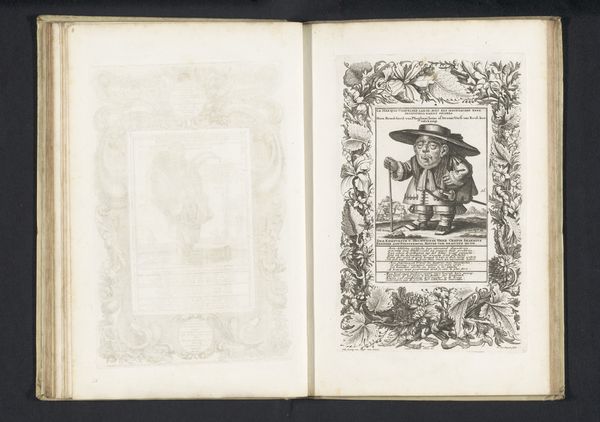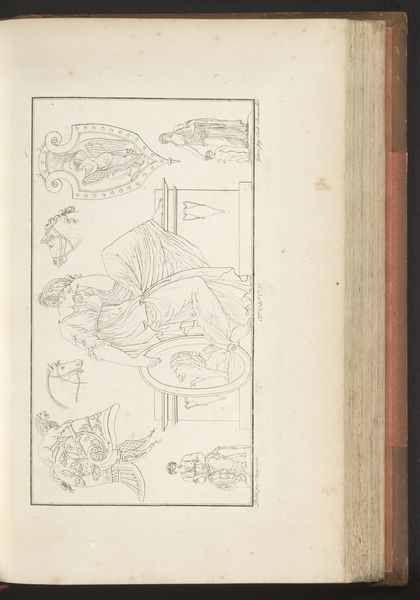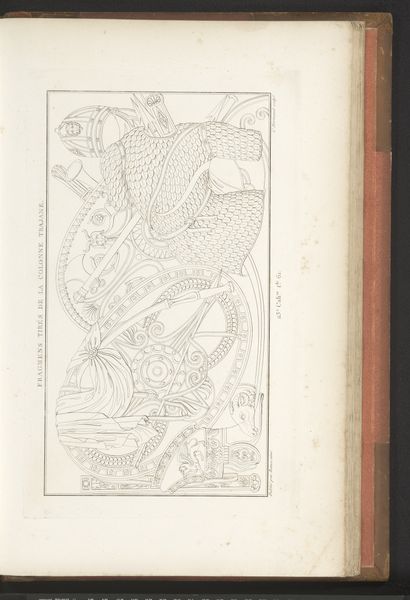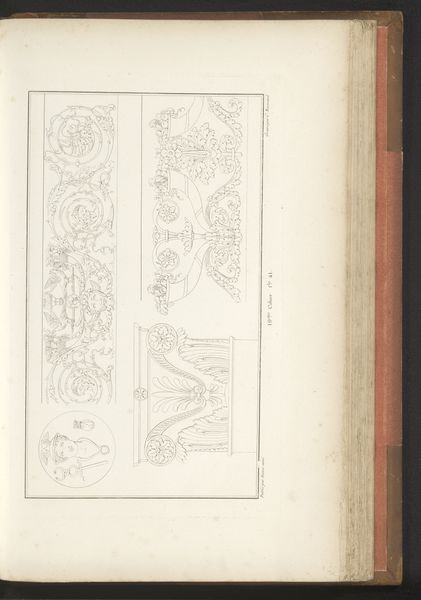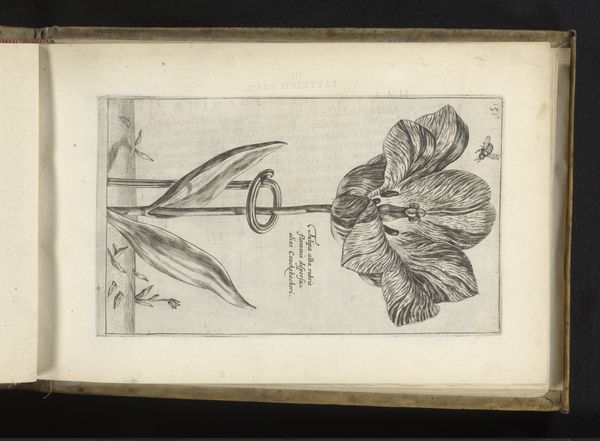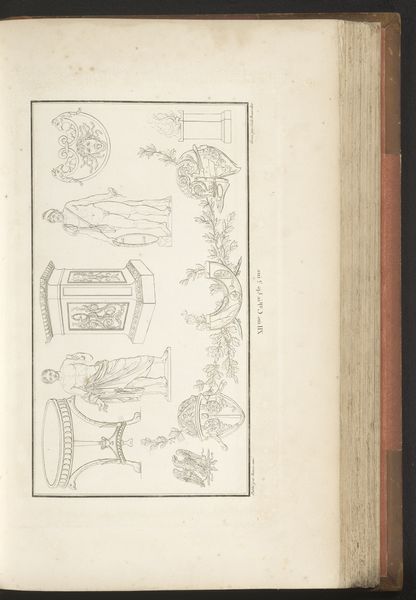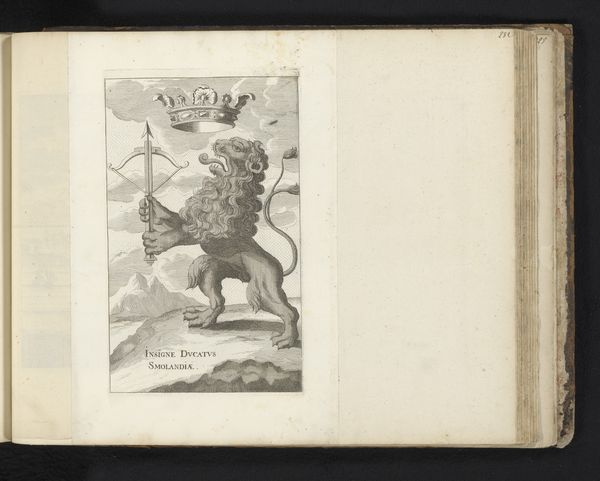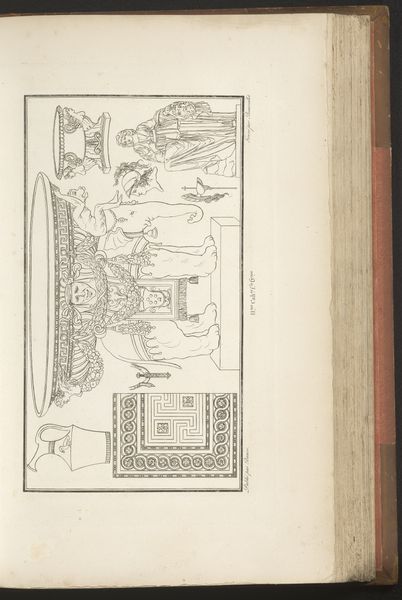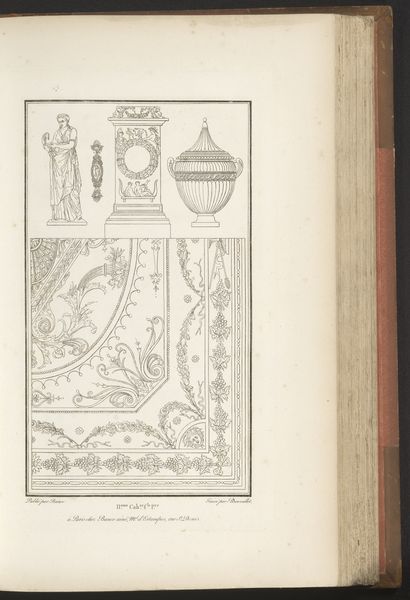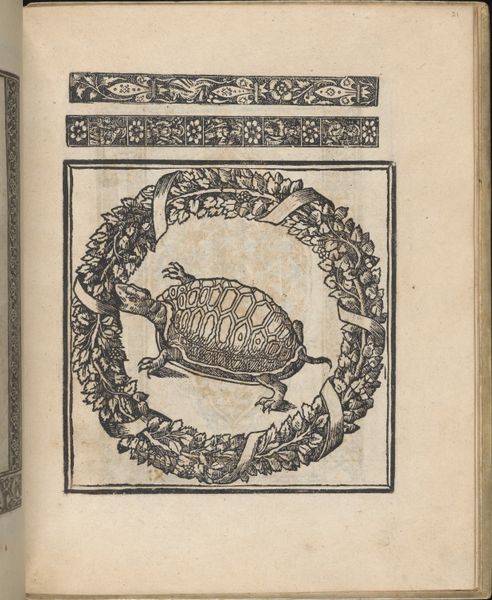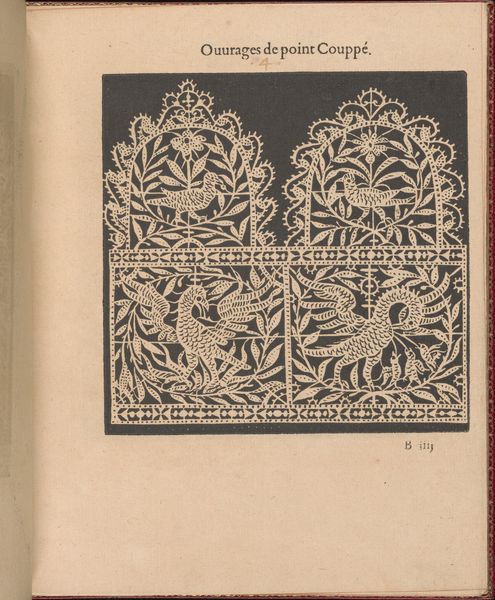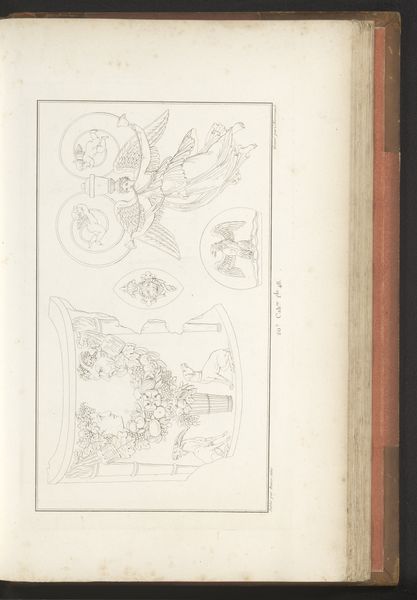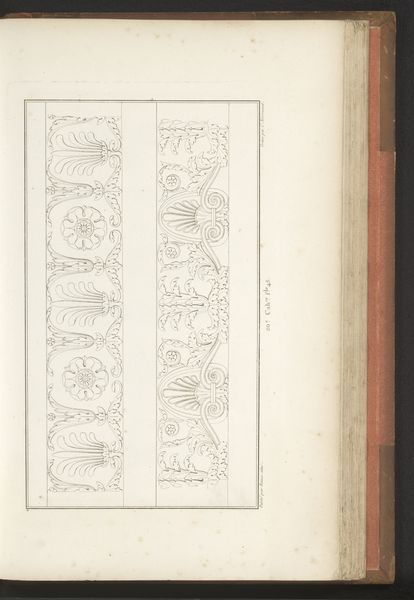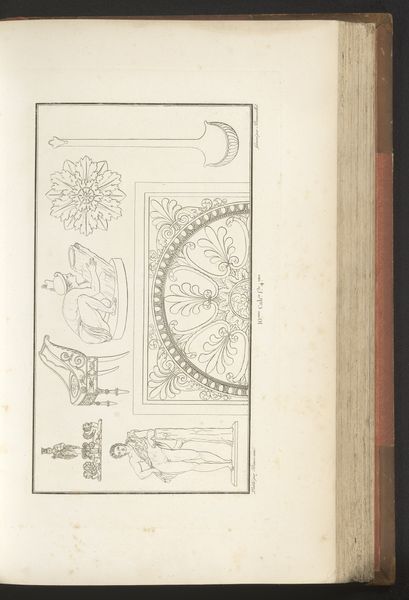
drawing, paper, ink, pen
#
drawing
#
aged paper
#
neoclassicism
#
pen sketch
#
sketch book
#
hand drawn type
#
paper
#
form
#
personal sketchbook
#
ink
#
ink drawing experimentation
#
geometric
#
pen-ink sketch
#
line
#
pen work
#
sketchbook drawing
#
pen
#
history-painting
#
decorative-art
#
sketchbook art
Dimensions: height mm, width mm
Copyright: Rijks Museum: Open Domain
Editor: Here we have "Diverse ornamenten," a pen and ink drawing from 1820 by Cécile Beauvallet. It appears to be a page from a sketchbook, featuring various ornamental studies. It gives me the impression of being very academic, almost like a reference sheet. What do you make of it? Curator: It's fascinating to see this level of detailed study and documentation, especially from this period. Consider the context: 1820, just after the Napoleonic era. There was a real push across Europe to codify knowledge, to classify and organize everything from natural history to art and architecture. Beauvallet’s sketchbook page reflects this impulse. We see elements referencing antiquity but meticulously drawn in the neoclassical style, which became closely associated with civic virtue and the social order championed by state academies. Editor: So you're saying it's less about artistic expression and more about a system of recording? Curator: Precisely! Think about the rise of museums during this time. They weren't just repositories of beautiful objects; they were instruments of education and social control. Images like this, circulated in print, allowed artists and artisans to learn, emulate, and, in some sense, perpetuate officially sanctioned styles. Notice how each object is isolated. Do you think that serves a purpose? Editor: Well, perhaps that was intended to allow students or other artists to easily copy the objects as part of their own works. Curator: Good point! It's like a catalogue of approved forms. What strikes me is the deliberate selection: classical sculpture, architectural details...all reinforcing a specific cultural narrative. Editor: That definitely reframes how I see it. I initially viewed it as just a simple sketchbook page, but understanding the historical drive for classification and the social role of art in the 19th century provides it a fresh perspective. Curator: Indeed, the politics of imagery are often concealed beneath the surface of seemingly innocent sketches. By viewing art as part of social history, this opens up layers of interpretation that may initially go unnoticed.
Comments
No comments
Be the first to comment and join the conversation on the ultimate creative platform.
